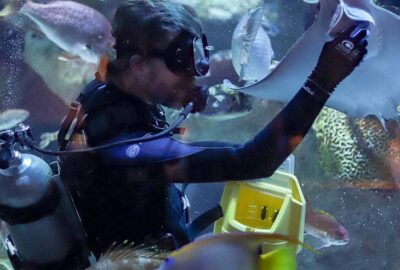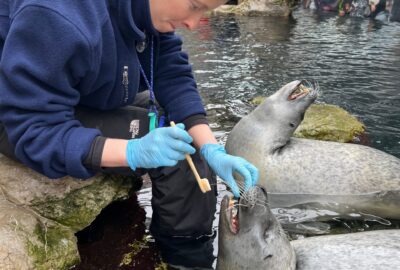A Look Behind Routine Checkups with Our Animal Health Team
From anacondas to penguins, get a behind-the-scenes look at our animal exams.
By New England Aquarium on Friday, October 17, 2025

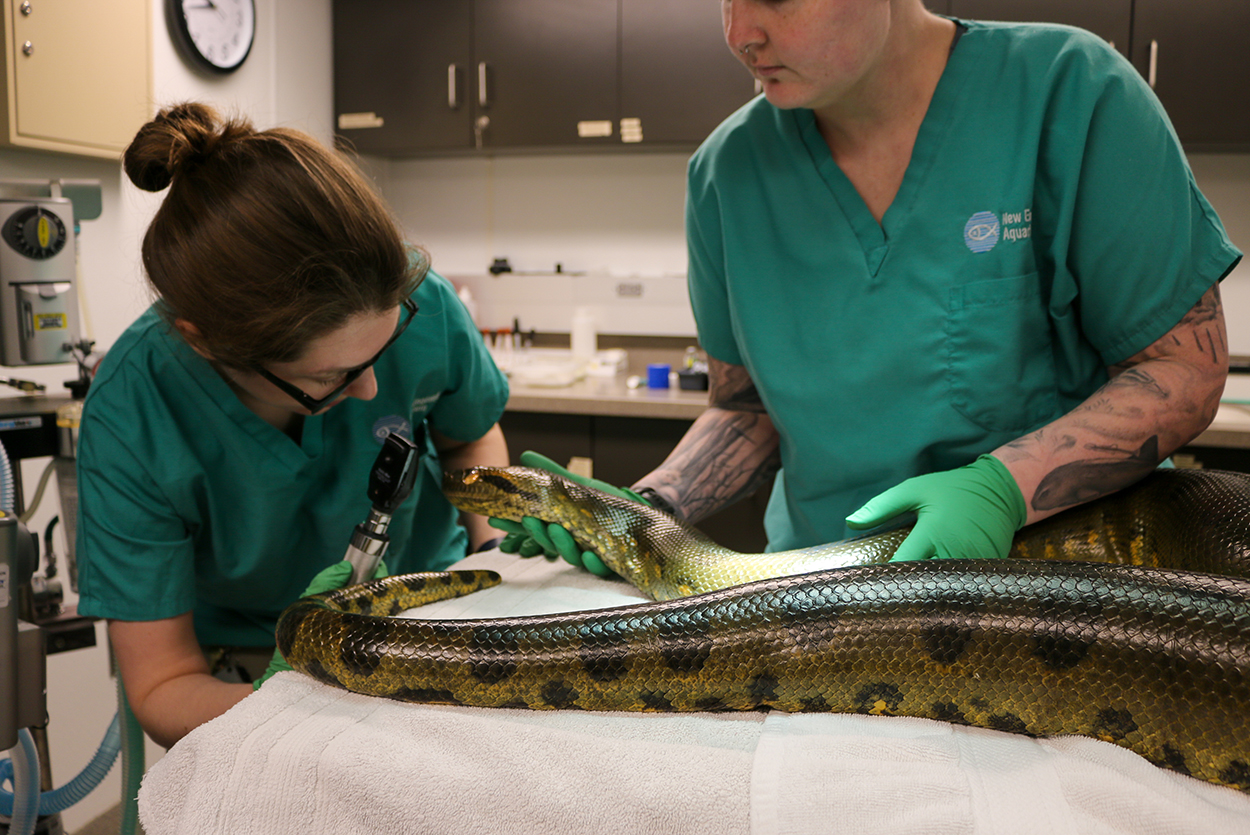
The New England Aquarium’s Animal Health Department performs hundreds of animal checkups each year. Whether the patient is a 12-foot anaconda, a 200-pound sea turtle, or a senior penguin in its 30s, each exam is tailored to that animal’s needs—using tools like ultrasounds, X-rays, and careful observation to keep them healthy and thriving.
“We approach these exams the way you would a human’s yearly physical,” said Nina Nahvi, Aquarium Medical Center manager. “The best medical care you can have is catching small changes early, before they turn into something serious.”
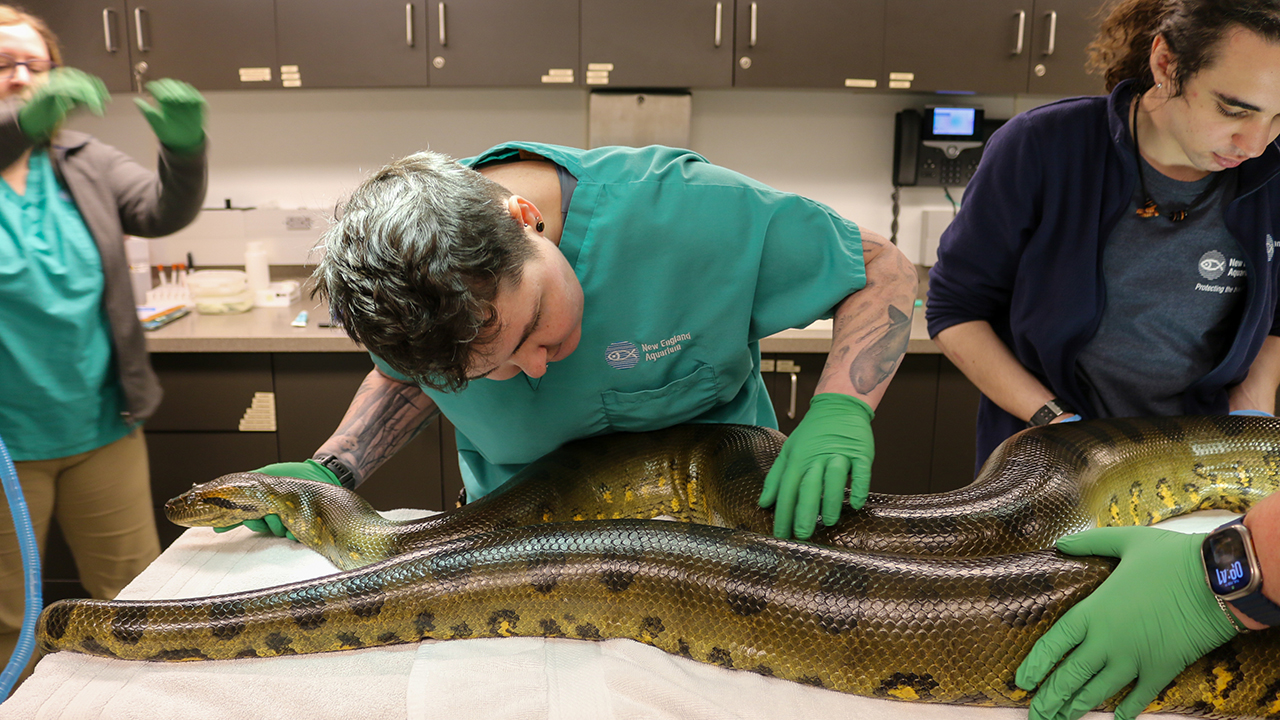
Anaconda exams: Ensuring health from head to tail
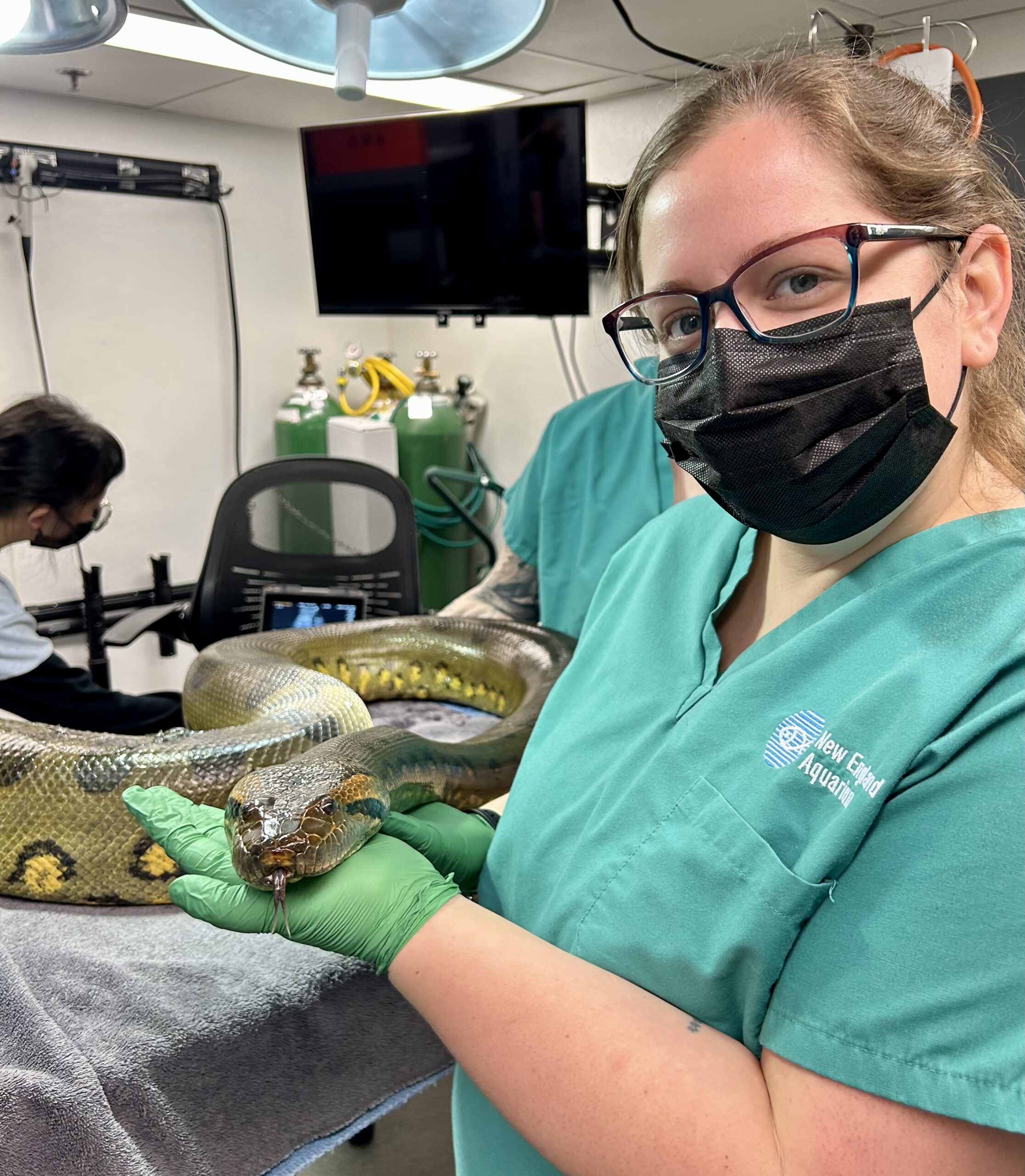
When it’s time for their annual exams, the Aquarium’s green anacondas—Marion, Wilson, and Genny—each receive a carefully tailored plan to keep the process safe and stress-free. Preparation begins with a treatment sheet, where the team records the snake’s most recent weight, length, and girth to note growth over time. Supplies for blood draws, oral and eye exams, and imaging are organized in advance so the exams of these wiggly patients go smoothly.
During the exam, veterinarians perform a full physical—carefully examining the anaconda’s body, eyes, and mouth with specialized tools such as a bite block to safely check the oral cavity. For a deeper look at overall health, the team collects a small blood sample from the tail vein for lab analysis. Because snakes’ blood vessels aren’t visible or easy to feel, this step relies entirely on anatomical knowledge and experience.
Radiographs and ultrasounds complement the physical exam, giving the team a look at what’s happening beneath the snake’s scales. X-rays capture small sections of the anaconda’s body at a time to reveal bone structure or digestive activity, while an ultrasound placed over the heart lets the team observe its contractions in real time. “We’re looking for any abnormalities,” Nina said. “Usually the results are completely fine, but they help us build a detailed health record for each animal, guiding care over time.”
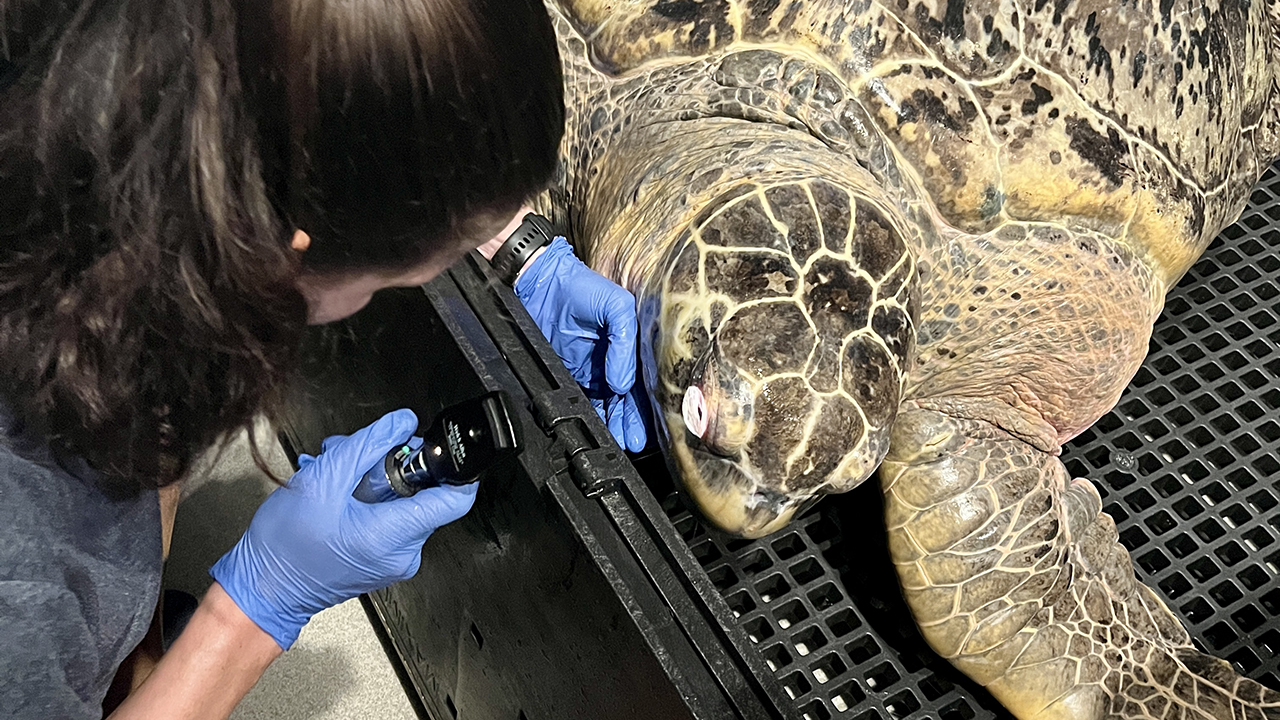
Sea turtle exams: A peek beneath the shell
Carolina and Retread, two loggerhead sea turtles in the Giant Ocean Tank exhibit, were once cold-stunned juveniles rescued through the Aquarium’s Sea Turtle Rescue and Rehabilitation program. Both were deemed non-releasable due to vision issues, but today they’ve grown into thriving adults—receiving the same quarterly exams as Myrtle, the Aquarium’s quarter-ton green sea turtle, to help ensure their continued good health.
Each turtle’s exam is a coordinated effort involving divers, veterinarians, and Animal Care staff. The process begins when divers gently guide a turtle into a large crate designed with drain holes and collapsible sides. An overhead hoist then lifts the crate from the water onto a platform, giving the team safe and easy access for the exam.
Once on deck, veterinarians check every part of the turtle—the neck, eyes, mouth, shell, and flippers—recording any unusual bumps, abrasions, or irregularities. Even the turtles’ nails are checked and trimmed when needed, a routine “pedicure” that prevents overgrowth. Blood samples are drawn from the neck at least once a year and sent out for analysis.
Ultrasound imaging provides a deeper look internally. For Carolina and Retread, the team tracks follicle development in their reproductive systems. These records create a detailed health history that helps guide care decisions and detect patterns across years.
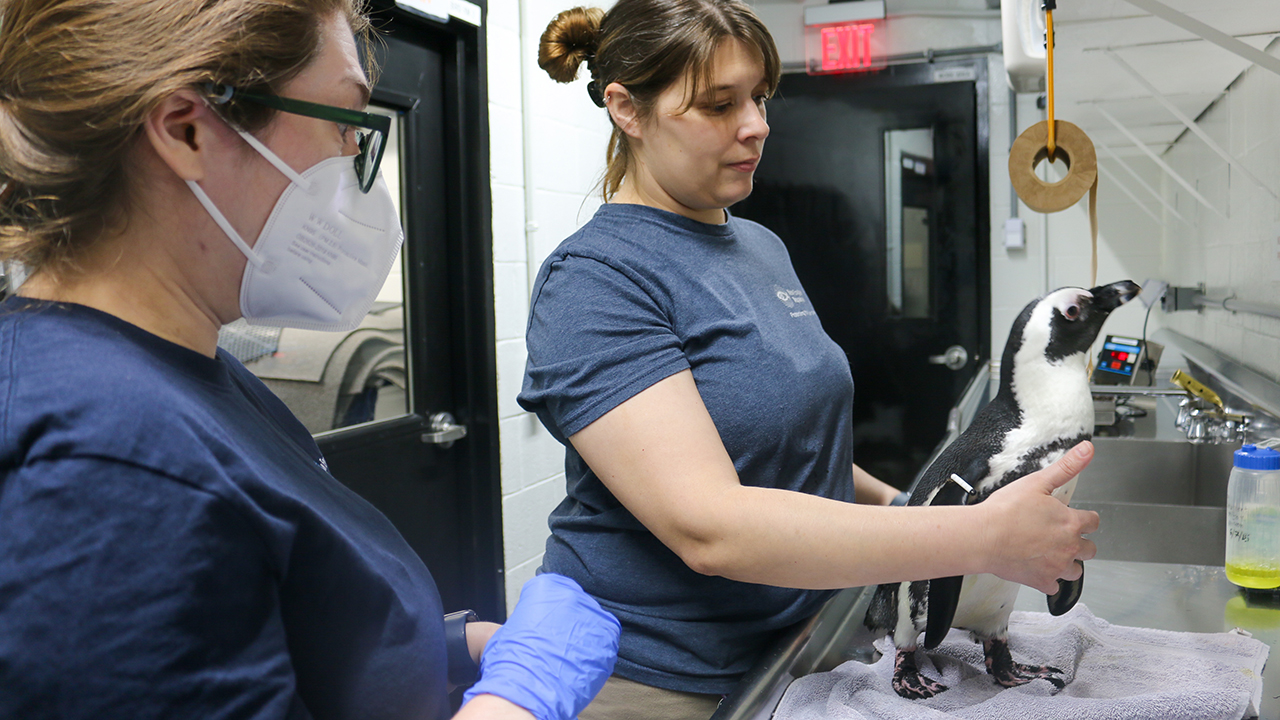
African penguin exams: Caring for an aging colony
With around 40 African penguins in our care, the Aquarium’s Animal Health and Penguin teams coordinate annual exams on each bird every fall—timed to avoid the birds’ molting season, when they’re more vulnerable to illness. About four birds are examined each day, twice a week, until the entire colony has been seen.
Each penguin is gently placed in a carrier and brought from the exhibit to a temperature-controlled room for the exam. Veterinarians record the bird’s weight, listen to its heart and lungs, and check its eyes, mouth, feet, and overall condition. The uropygial gland at the base of the tail—used in preening—is also examined, and blood samples are sometimes collected, typically every other year or more frequently for older birds. X-rays give the team a look inside, revealing the lungs, spine, and digestive tract. “We have a lot of old birds, so we do see spinal disease and arthritis sometimes,” Nina said.
More than 60% of the Aquarium’s African penguins are over the age of 15, with the oldest now in their mid-30s—about twice their typical wild lifespan. Older birds also receive more detailed eye exams, using a probe to measure eye pressure and a slit lamp to view different layers of the eye. “It’s interesting, the commonalities of older animal issues,” Nina said. “When you get old, you may eventually develop cataracts. As penguins age, they may eventually develop cataracts. People always think humans are so different from animals, but we’re not—we face a lot of the same challenges in aging.”
Calm cooperation during exams comes from years of consistent training. Each penguin has a primary trainer who reinforces handling behaviors through daily positive interactions to reduce stress during exams. “The fact that we can handle the animals and they’re not stressed is great,” Nina said. “I know that the Penguin team works really hard on all those behaviors.”
Across the Aquarium, these exams not only keep animals healthy but also deepen our understanding of their biology and behavior. Each checkup adds to a growing record that helps the Veterinary team spot subtle changes, track aging, and refine care techniques over time. From a snake’s heartbeat to a penguin’s eyesight, every exam contributes to the ongoing science of animal care—and to ensuring these populations continue to thrive for years to come.
Plan your visit to the Aquarium to see the results of this care, from thriving sea turtles and anacondas to senior penguins on “retirement home” island.


